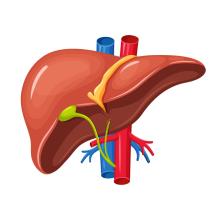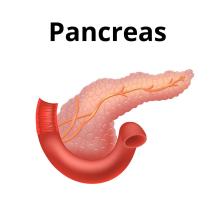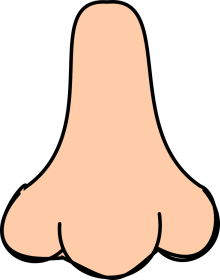Recent Publications

Tsafrir Or: Outcomes of patients with acute coronary syndrome according to COVID-19 vaccination status (Coron Artery Dis . )
COVID-19 vaccination has been associated with reduced risk of acute coronary syndrome (ACS); however, several studies have reported cardiovascular complications following vaccination. We aimed to investigate the effect of COVID-19 vaccination status on the treatment and outcome of ACS patients.

Maria Elias, Samar Gani, Yana Lerner, Katreen Yamin, Chen Tor, Adarsh Patel, Avi Matityahu, Moshe Dessau, Nir Qvit, Itay Onn: Developing a peptide to disrupt cohesin head domain interactions (iScience .)
Cohesin mediates the 3-D structure of chromatin and is involved in maintaining genome stability and function. The cohesin core comprises Smc1 and Smc3, elongated-shaped proteins that dimerize through globular domains at their edges, called head and hinge. ATP binding to the Smc heads induces their dimerization and the formation of two active sites, while ATP hydrolysis results in head disengagement. This ATPase cycle is essential for driving cohesin activity. We report on the development of the first cohesin-inhibiting peptide (CIP).

Maamoun Basheer, Elias Saad, Helena Jeries, Nimer Assy: Liver Fat Storage Is a Better Predictor of Coronary Artery Disease than Visceral Fat (Metabolites .)
Fatty liver is one aspect of metabolic syndrome. The roles and contributions of fatty liver and visceral fat storage to coronary artery disease (CAD) are not clear. This study measured associations among visceral fat storage, fatty liver, insulin resistance, atherosclerosis, and CAD.

Afif Nakhleh, Naim Shehadeh: A beneficial role of GLP-1 receptor agonist therapy in ABCC8-MODY (MODY 12) (J Diabetes Complications .)
Maturity-onset diabetes of the young (MODY) is an inherited form of diabetes resulting from a mutation in a single gene. ABCC8-MODY is caused by mutations in the ABCC8 gene, which encodes sulfonylurea receptor 1 (SUR1), a regulatory component of the ATP-sensitive potassium (KATP) channel found in beta cells. In ABCC8-MODY, mutations in the ABCC8 gene interfere with insulin secretion in response to glucose. Recent evidence suggests that therapy with GLP-1 receptor agonists (GLP-1 RAs) may be beneficial in ABCC8-MODY. This report presents a successful treatment of a 49-year-old woman diagnosed with ABCC8-MODY using the GLP-1 RA semaglutide.

Konstantinovsky Alex, Kuchersky Nina, Kridin Khakaf: Improvement in Endothelial Function in men taking phosphordiesterase type 5 inhibitors for erectile dysfunction (Am J Med . )
The purpose of this research was to explore the mechanistic protective cardiovascular effects of phosphodiesterase-5 inhibitors (PDE5i) in men with erectile dysfunction. Erectile dysfunction and endothelial dysfunction both precede clinical atherosclerosis. Studies have shown that treatment for erectile dysfunction with PDE-5i decreased death, heart failure, myocardial infarction, and revascularization in men with erectile dysfunction who had previous myocardial infarction, and cardiovascular events.

Moran Yadid: A Platform for Assessing Cellular Contractile Function Based on Magnetic Manipulation of Magnetoresponsive Hydrogel Films (Adv Sci (Weinh) . )
Despite significant advancements in in vitro cardiac modeling approaches, researchers still lack the capacity to obtain in vitro measurements of a key indicator of cardiac function: contractility, or stroke volume under specific loading conditions-defined as the pressures to which the heart is subjected prior to and during contraction. This work puts forward a platform that creates this capability, by providing a means of dynamically controlling loading conditions in vitro.

Shaul Atar: Downstream Imaging Studies Do Not Significantly Improve Outcome in Most Patients with Chest Pain Who Did Not Reach Their Target Heart Rate on a Stress ECHO Study (J Clin Med . )
Echocardiographic stress tests are often used to evaluate patients who complain of chest pain. However, some patients fail to reach the target heart rate required for the test to be conclusive (usually defined as 85% of the predicted maximal heart rate based on the patient's age) and are often sent for additional imaging tests, such as myocardial perfusion imaging (MPI) or cardiac computed tomography angiography (CTA). Few studies have evaluated the effectiveness of these additional tests in patients who present with chest pain but did not meet the heart rate requirements for a stress test. The primary objective of the study was to evaluate the efficacy of additional imaging tests for patients who experience chest pain during daily activities but are unable to reach the target heart rate currently required for an echocardiographic stress test.

Assaf Malka, Michael Assa, Ron Piran: Hyperglucagonaemia in diabetes: altered amino acid metabolism triggers mTORC1 activation, which drives glucagon production (Diabetologia .)
Hyperglycaemia is associated with alpha cell dysfunction, leading to dysregulated glucagon secretion in type 1 and type 2 diabetes; however, the mechanisms involved are still elusive. The nutrient sensor mammalian target of rapamycin complex 1 (mTORC1) plays a major role in the maintenance of alpha cell mass and function. We studied the regulation of alpha cell mTORC1 by nutrients and its role in the development of hyperglucagonaemia in diabetes.

Noam Yehudai, Dalya Tedgi, Ziv Gil: Shackling incarcerated people in Israeli hospitals-a multicentre study followed by a national intervention programme (Lancet . )
Thousands of incarcerated people (individuals who have been imprisoned or detained) are treated in Israeli medical centres each year. The custodial authority during their hospital stay is the local police, the Israel Prison Service (IPS), or the Israeli Army. Positioned at the crossroads of security and human rights, the treatment of these patients almost invariably raises major ethical issues. Shackling during hospital stay is associated with physical, mental, and social effects, which inevitably impair treatment. International guidelines, such as the Mandela Rules, determine that health-care standards should not differ for incarcerated people and, given that most incarcerated patients do not pose a direct threat, unselective shackling is considered a disproportional measure. In this regard, Israeli law states that incarcerated patients should not be shackled, except in selected circumstances for which individual assessment is required (mainly if there is a direct threat of violence or escape). Numerous manuscripts have conceptually addressed the ethical, legal, and medical considerations of shackling of incarcerated patients, but, to our knowledge, quantitative data on the extent and nature of shackling during hospital stays have never been published.

Khalaf Kridin, , Noor Mruwat: Evaluating the risk of infections under interleukin 23 and interleukin 17 inhibitors relative to tumour necrosis factor inhibitors - A population-based study (J Eur Acad Dermatol Venereol . )
The risk of infections among patients with psoriasis undergoing interleukin (IL)-23 inhibitors (IL-23i) and IL-17 inhibitors (IL-17i) is yet to be exhaustively determined. Objective: To assess the risk of infectious complications in patients with psoriasis managed by IL-23i and IL-17i with tumour necrosis factor inhibitors (TNFi) as a comparator.

Mohammed Aboraya, Ronit Ilouz: A conserved arginine within the αC-helix of Erk1/2 is a latch of autoactivation and of oncogenic capabilities (J Biol Chem)
Eukaryotic protein kinases (EPKs) adopt an active conformation following phosphorylation of a particular activation loop residue. Most EPKs spontaneously autophosphorylate this residue. While structure-function relationships of the active conformation are essentially understood, those of the 'prone-to-autophosphorylate' conformation are unclear. Here, we propose that a specific site within the αC-helix of EPKs, occupied by Arg in the MAPK Erk1/2 (Arg84/65), impacts spontaneous autophosphorylation capability. MAPKs lack spontaneous autoactivation, but we found that converting Erk1/2's Arg84/65 to various residues is sufficient to enable spontaneous autophosphorylation.

Exome sequencing links the SUMO protease SENP7 with fatal arthrogryposis multiplex congenita, early respiratory failure and neutropenia (J Med Genet)
SUMOylation involves the attachment of small ubiquitin-like modifier (SUMO) proteins to specific lysine residues on thousands of substrates with target-specific effects on protein function. Sentrin-specific proteases (SENPs) are proteins involved in the maturation and deconjugation of SUMO. Specifically, SENP7 is responsible for processing polySUMO chains on targeted substrates including the heterochromatin protein 1α (HP1α). We performed exome sequencing and segregation studies in a family with several infants presenting with an unidentified syndrome. RNA and protein expression studies were performed in fibroblasts available from one subject.
(Nadra Samra, Ilham Morani, Yuri Viner, Hilel Frankenthal, Eric S Shinwell, Igor Portnov, Doua Bakry , Hanna Mandel)

Gassan Moady, Shaul Atar: The safety of sodium-glucose co-transporter 2 inhibitors in patients with left ventricular assist device - a single center experience (J Cardiovasc Med (Hagerstown) .)
Sodium-glucose co-transporter 2 (SGLT2) inhibitors are used increasingly for patients with heart failure or chronic kidney disease to improve cardiac and renal outcomes. The use of these medications in patients with left ventricular assist devices (LVAD) is still limited and lacks evidence regarding the safety profile. In this study, we aimed to report our experience in treating 20 patients, supported by LVAD, with SGLT2 inhibitors.

Matti Mizrachi, Eli Layous, Amiel A Dror, Orly Yakir, Ahmad Bader, Eyal Sela: Periorbital Ecchymosis Post Closed Rhinoplasty: Natural History, Risk Factors, and Validation of a New Scoring System (Plast Reconstr Surg Glob Open .)
Postrhinoplasty periorbital ecchymosis is an inevitable side effect contributing to patients' psychological aspect and early postoperative morbidity. Efforts are constantly being made to reduce ecchymosis using different methods with varying success. To evaluate treatment response, it is mandatory to have a reliable score. Several studies suggest other scoring systems, but none has been postrhinoplasty-specific, validated, and accepted. This study aimed to demonstrate the natural history of postrhinoplasty ecchymosis, find potential risk factors for worsening patterns, and suggest a useful and reliable periorbital ecchymosis scoring system for postrhinoplasty follow-up.

Maria Naama, Shai Bel: Autophagy-ER stress crosstalk controls mucus secretion and susceptibility to gut inflammation (Autophagy . )
Mucus secretion from colonic goblet cells is an important host defense mechanism against the harsh lumenal environment. Yet how mucus secretion is regulated is not well understood. We discovered that constitutive activation of macroautophagy/autophagy via BECN1 (beclin 1) relieves endoplasmic reticulum (ER) stress in goblet cells, which in turn produce a thicker and less penetrable mucus barrier.



